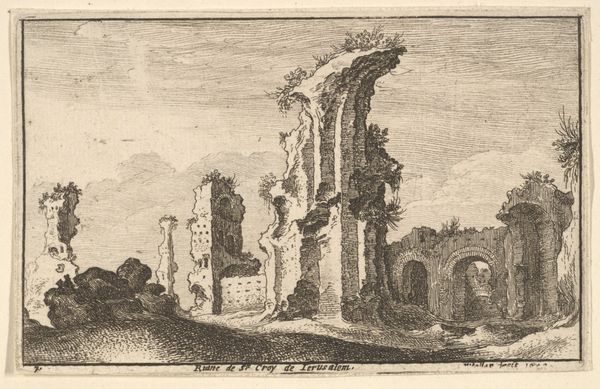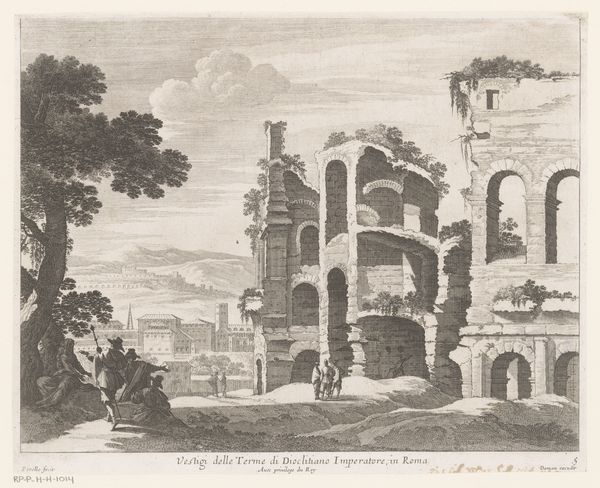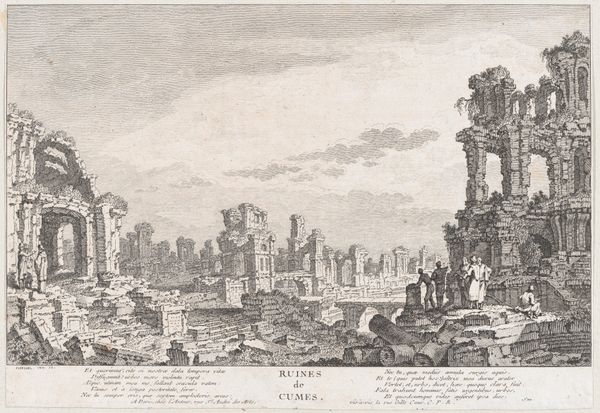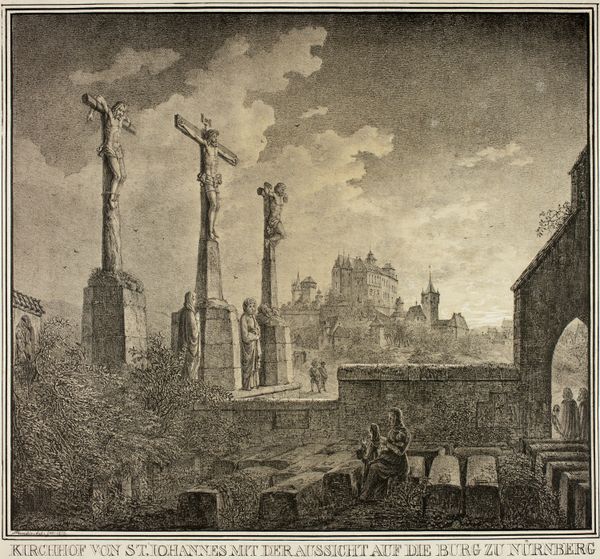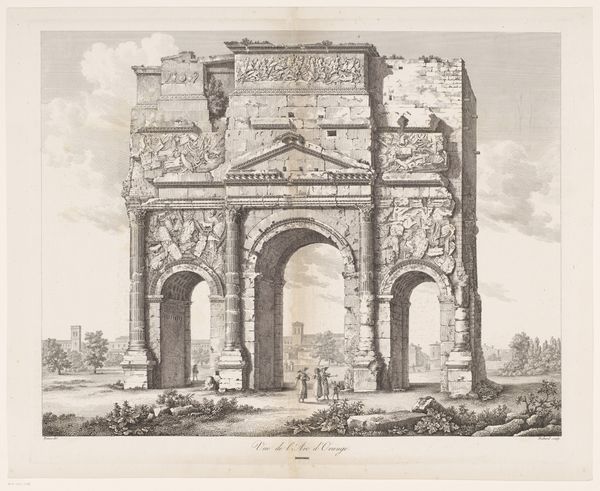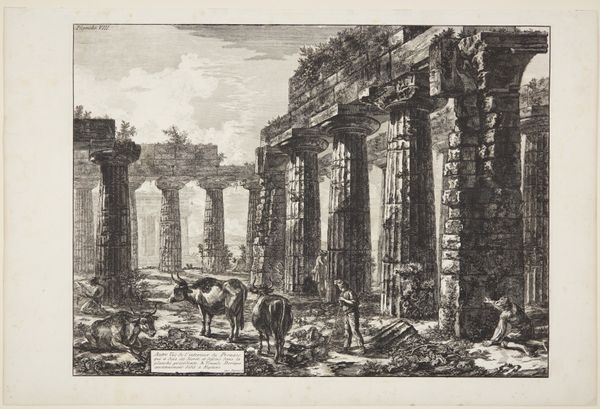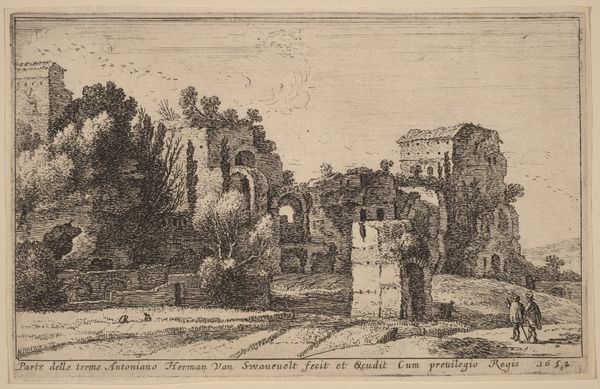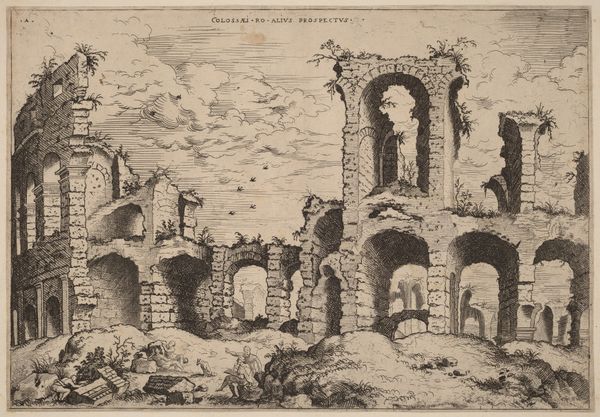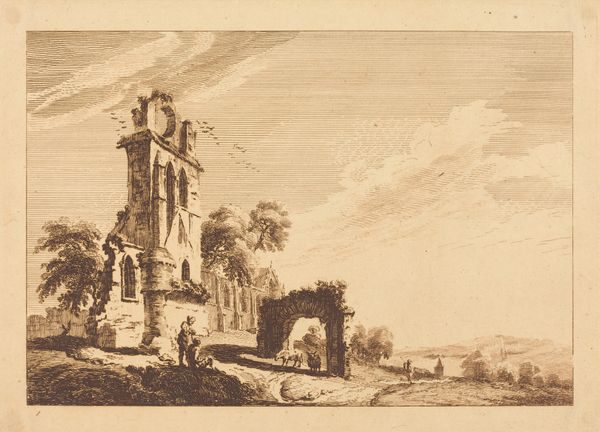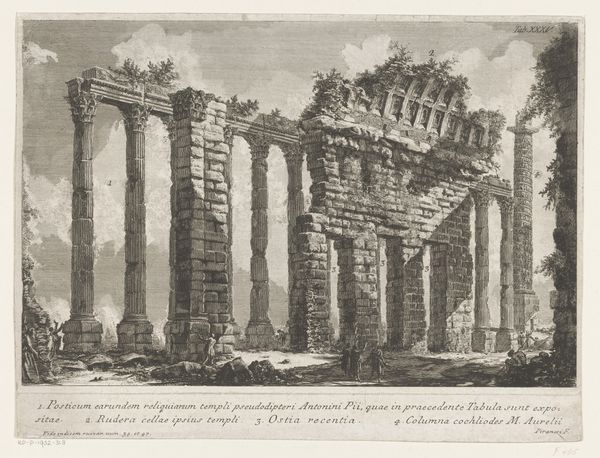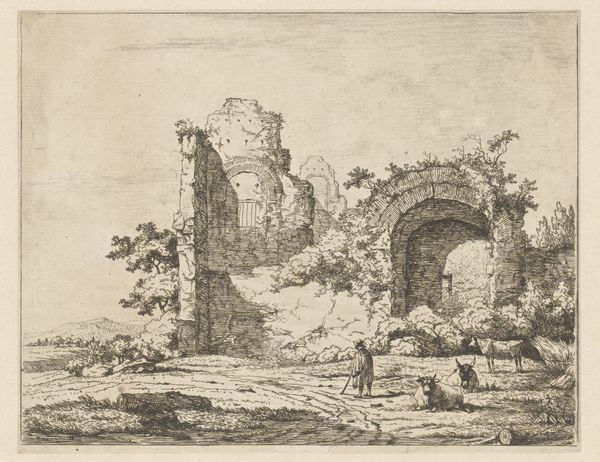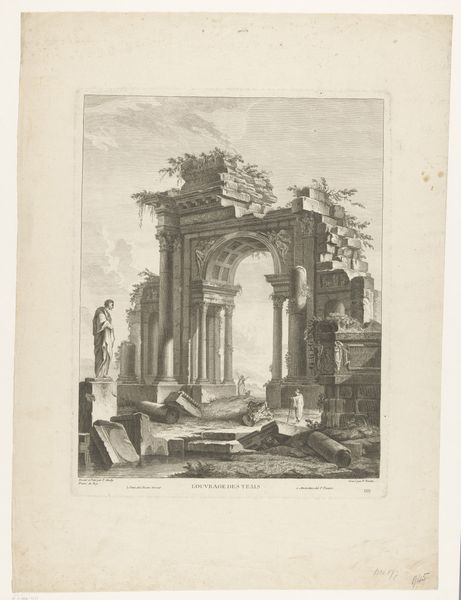
Dimensions: sheet: 7 3/4 x 11 1/8 in. (19.7 x 28.2 cm)
Copyright: Public Domain
Curator: I find Quentin Pierre Chedel's "Ruines de Cumes," likely completed between 1720 and 1762, absolutely haunting. It’s an etching. What is your initial take? Editor: Bleak. Stripped down, almost monochromatic. I am struck by the texture – the roughness of the remaining stone set against the emptiness. There is a pervasive sense of loss or perhaps entropy at work here, wouldn't you agree? Curator: Undoubtedly. And that aesthetic perfectly suited its historical context! Neoclassicism. Look how Chedel, as so many artists did, used prints to disseminate views of classical ruins. These etchings shaped the understanding, and perhaps even the marketing, of classical sites for a broader 18th-century audience. The printing process itself enabled these images to travel widely, influencing design, architecture, and even tourism. Editor: The choice of etching itself becomes interesting. Why depict monumental structures with a rather humble medium? Could it be to signal something of an emerging democratisation of art or at least artistic consumption? Curator: I like your perspective. The scale here is crucial, though. Look at the two small figures juxtaposed to these ruins; their presence highlights the immensity and decay. And how do you see these lines – are they purely representational or something more? Editor: I think it’s more than depiction. Look at the sheer number and variations within them—hatching, cross-hatching. He uses this line-making laboriously and cleverly to give form to the absent original materials of the monument, brick by brick, or suggest where those may have been, but ultimately the lines are always right there in front of us. Curator: So you read it as him wanting to spotlight his artifice rather than recreate reality…fascinating. In all I still view this etching as a vehicle. These kinds of works fed a growing fascination with antiquity. "Ruines de Cumes" is so emblematic of the period, really serving the public need of that moment. Editor: And I will remember the meticulous hand, line after line of patient making… an apt representation of time and inevitable change, but fixed, by craft, forever.
Comments
No comments
Be the first to comment and join the conversation on the ultimate creative platform.
